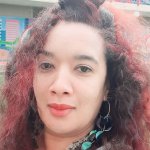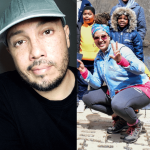Wendy Ogilvie & Robert Cloy
Grand Rapids, Michigan | May 5, 2023
“Another reason [the West Michigan Project Partners] got together was to build on each other instead of competing for the same grants. We’re working together to do bigger projects.”
— Wendy Ogilvie
Transcript
Hannah Mico: Just to get us started, Wendy and Robert, we’d love to hear a short introduction and what your roles are at the Lower Grand River Organization of Watersheds (LGROW). Wendy, would you like to kick us off?
Wendy Ogilvie: Sure! I am Wendy Ogilvie. I am the Director of Environmental Programs at the Grand Valley Metropolitan Council. The environmental programs also house the Lower Grand River Organization of Watersheds, so I’m the director of that as well and it functions as an agency of the GVMC. I’ve been here for about 10 years. Seeing our program and staff grow is exciting given the projects we have going on right now.
Robert Cloy: And I’m Robert Cloy. I am the Urban Waters Federal Ambassador here at LGROW and was hired about 8 months ago. The Urban Waters Federal Ambassador position was brought on to be responsible for finalizing, coordinating, and updating the Grand Rapids Grand River workplan, as well as to work with GVMC and other local leaders to connect the community back to the Grand River.
Hannah Mico: Thank you, both. I’d love to hear more about how GVMC got involved with the Urban Waters Federal Partnership.
Wendy Ogilvie. In 2013, I was on the project team for the Grand River Revitalization Project, led by Grand Rapids Whitewater, and some members of the community were connected with some of the Federal agencies and had heard about this Urban Waters Federal Partnership opportunity. We thought it was a really good fit, and [our application] was accepted. Many representatives from those Federal agencies came to Grand Rapids to announce the acceptance of our location into the Urban Waters Federal Partnership program. But [the Grand River Revitalization Project] is very different from most Urban Waters because it’s not a Federal project. This was just a grassroots effort by a couple of people and then a nonprofit. I had been trying to find the right Federal partner to maybe fund a position here. Finally, through EPA Region 5, we were able to work out an arrangement and get funding from EPA, that then had to go through the Forest Service, to hire Robert. It was 10 years in the making.
Robert Cloy: I would like to see the [Urban Waters] Ambassador role serve as kind of a facilitator, a focal point for some of these partners, and better coordinate amongst everyone involved in the Grand River Revitalization Project.
Hannah Mico: What is the Grand River Revitalization Project in a nutshell and how do you all continue to stay involved over this 10 year process?
Wendy Ogilvie: The Project started out as a dream of these 2 guys asking, “Hey, where are the rapids in the city of Grand Rapids?” There’s a history of scouring out the rapids to build foundations for city buildings and flood walls. The question was how we restore the rapids and make it a river that people can recreate in. As the project went on, it became much more of a holistic restoration project. How can we improve all facets of the river, not just for recreation but for the environment – the animals and the fish – and the important processes happening in this river corridor. [The plan] has gone through many revisions and iterations over the years.
Hannah Mico: You’ve named a couple of things that are unique about the project. One of the big ones seemed to be that this wasn’t a project initiated by a Federal partnership. Are there other big ways that this restoration project is unique to Grand Rapids?
Wendy Ogilvie: So many things! The river runs downtown and is very impacted by bridges. There are over 100 bridge piers in the Grand River. There are flood walls too, so it’s never going to be a true restoration. We can never bring the Grand River back to what it was. So, we’ve been trying to call it the Grand River Revitalization Project, as opposed to Restoration. That’s how the scientists and agencies want to refer to this project.
Hannah Mico: What has impacted the timeline of the Project and getting things off the ground and moving forward?
Wendy Ogilvie: At first we thought we’d just take out the dams, add some rocks, and we should be good. But every time we brought something up, a new challenge arose. One of the first challenges was the question of all this contaminated sediment that the dams were holding back. We tested the sediment and, turns out, it’s such a shallow system that it seems to get flushed out all the time. That was one of the big urban myths we had to debunk. But we did discover the Federally endangered snuffbox mussels, which brought us into another regulatory realm. We also found the invasive lamprey. It became a question of figuring out how to find passage for all these native fish without letting the lamprey pass and contaminate the rest of the watershed. In Grand Rapids, we’re working with the International Joint Commission, which is an agreement between the US and Canada essentially saying “we won’t contaminate your waters and you won’t contaminate ours.” So we’re not only working with several Federal agencies but also an international agency. There have been a lot of challenges that we’ve consistently met, but working with so many agencies definitely impacts the timeline.
Hannah Mico: Robert, in your position as the Urban Waters Ambassador and being more new to this project, what have you been interpreting as unique about this project and the challenges and opportunities it poses?
Robert Cloy: The uniqueness stems from the way the investor position is hosted. Like Wendy said, other projects like this have Federal leads or Federal agencies that are running their investor position. But, in Grand Rapids, there’s a strong network of partners and organizations that share the same goal of connecting people back to the urban waters. The partners are unique to this location. We’re really grassroots and more bottom up, which lends itself to easier relationships.
Hannah Mico: You’ve both mentioned the partners a few times. I’m curious who these partners are and how you’ve been facilitating community visioning and engagement around this project.
Robert Cloy: As the Urban Waters Federal location, we do have a steering committee as a strong network. They call themselves the West Michigan Project Network and it’s led by Elaine Sterrett Isely at the West Michigan Environmental Action Council (WMEAC). That group, including others from LGROW, the City of Grand Rapids, and River Network came together to develop a work plan that the Ambassador will then finalize. A lot of these organizations have public facing programs and their own outreach strategies, so we’re just kind of working with partners and seeing how they’re engaging their communities.
Wendy Ogilvie: Another reason [the West Michigan Project Partners] got together was to build on each other instead of competing for the same grants. We’re working together to do bigger projects. The group also includes Plaster Creek Stewards, Friends of Grand Rapids Parks, Grand Rapids Whitewater, and Groundswell out of Grand Valley State University. It’s a really wide variety of partners who all understand that we can do more together.
Robert Cloy (he/him): We also have a River For All group here in Grand Rapids, as well as another iteration, Grand River Voices. They came out with an equity framework just a couple of months ago, which serves as a guiding document for residents, policymakers, and really any stakeholders to embed equity into how they’re approaching work on the riverfront. The equity framework was informed and developed by the community and the framework is public. Stakeholders are being asked to read through it and find their role in the engagement piece. It’s been a really helpful part of our community engagement.
Hannah Mico: Turning the lens back toward you all at LGROW, what positioned you all as the organization to help champion the Grand River Revitalization Project?
Wendy Ogilvie: We’ve had a really good partnership with Grand Rapids Whitewater from the very beginning, but LGROW had the credibility and history in the area to connect with the municipalities upstream and downstream. This is 2 miles of the Grand River that might be restored, but there’s 250 miles of river upstream and another 40 miles downstream. It’s all connected. LGROW was the voice trying to get buy-in, or at least stewardship, from the rest of the watershed.
Robert Cloy: I’ll echo that: the position that LGROW is in and the kind of influence they have in different communities really lends itself well to what we’re trying to do with the Grand River Revitalization Project. They have context and partners in these different communities throughout the watershed, and that’s been extremely helpful.
Hannah Mico: What have you learned about working with State and Federal agencies through the Revitalization Project? Any nuggets of wisdom to share, or lessons learned?
Wendy Ogilvie: Be patient. It takes a lot of time. The more [information we learned], the more different agencies had to get involved. The endangered species brought in the U.S. Fish and Wildlife Service; then the lamprey, the invasive species, brought in another subsidiary of the same agency, but with conflicting goals. There was also the Fish Passage Division of the agency and the State Department, and those goals don’t always align either. It’s about trying to stay true to your project and make sure you’re clear on your goals while navigating these different regulations. Being in the Urban Waters Federal Partnership meant that we were able to work through some of these issues and agencies that we might not have had direct contact with without the partnership. But it can be time consuming and frustrating.
Robert Cloy: In my short time here, meeting with different partners, everyone seems to have pretty similar end goals [for the Revitalization Project], but their means of getting there might be different. The challenge is finding that middle ground that every partner can tap into while staying true to their own mission and goals. Patience is needed and also taking time to build authentic relationships with different agencies.
Hannah Mico: Thank you for sharing that. I know it’s a continuing point of frustration, especially with more recent permitting issues. But, charging ahead, I’m curious how the expanding network of Urban Waters Ambassadors has contributed here.
Robert Cloy: The network has been super helpful. We have our monthly call that includes all the Federal agencies, NGO partners, and investors of the Grand River Revitalization project, but those calls are a little high level at times. The Ambassadors have a coffee chat about once a month that’s a little more informal. We talk about our locations and the problems we’re dealing with. I can share my own hurdles and get feedback from others. It’s a great network, and great to know that you can reach out to them as well.
Wendy Ogilvie: And we love that Robert is so connected with this community in so many different ways. He’s just been able to hit the ground running and start connecting with partners. It’s been great to see him out there and bringing this project to people’s attention.
Hannah Mico: You’re both aware that River Network is bringing River Rally to Grand Rapids in 2024. How can the folks who attend Rally learn from this large-scale project?
Wendy Ogilvie: Even though we’re frustrated with how the project is progressing now, the community really has embraced this project. It’s a catalyst for lots of other things we could do in Grand Rapids. They have totally reimagined our river edges – why do we have our Department of Public Works with these big salt domes on the river edge, and why isn’t that a park? Why isn’t that a publicly accessible space? There’s been so much work done removing the flood walls. We still have flood protection but, in the meantime, using that as a green space. Now we’ve got a space that the city purchased from the State. We wanted to use it as a staging area for construction, but now they’re just trying out programming: a skate park and movies in the park and bike polo. They have all these cool [activities] to get people to the river. We’ll wait to see what happens on the river, but it has empowered anyone who owns property along the river to rethink [programs] and allow people to touch the river. There’s a lot of opportunity for River Rally attendees to learn from of some of this planning and visioning that’s going on along the riverbanks.
Hannah Mico: What other programs are you really excited about these days?
Wendy Ogilvie: GVMC is working on a landscape-level conservation plan with Audubon, on what we’re calling the West Michigan Coastal Corridor. We’re looking at the 6 miles of West Michigan along Lake Michigan, and then up to the Grand River Corridor. This is a high quality ecosystem for bird migration. And there’s a lot happening at the lakeshore like the decommissioning of coal plants and different opportunities to recapture that land to do some really significant ecological restoration there, or preservation. What we’re trying to do is kind of get all of those landowners and stakeholders together to see if we come up with some sort of comprehensive management plan, looking at our common goals to ensure that we’re keeping this vision of this great ecosystem for birds and wildlife in the area. We also have a rainscaping project, which is looking at individual residential sites and how they can manage stormwater on their own properties. We provide free site assessments and, as soon as we get enough of those, apply for grant funding for implementation.
Robert Cloy: We’re also working on Forest to Michigan Faucet. It is a DNR Forest Stewardship program and the purpose is to show the connection between healthy forests and clean drinking water. Some of our priorities include helping our local municipal water utilities implement their source water protection plan and coordinating with landowners to manage their already forested areas in hopes of preserving some of that [forest] and drinking water as well. We’re also planting 10,000 trees in rural locations along riparian zones in communities with smaller populations. And working with partners across the state to share our results and see how we can push this idea of clean forests equal clean water.
About
Wendy Ogilvie joined the Grand Valley Metro Council in 2013 as the Director of Environmental Programs, bringing her expertise of over 25 years in watershed and stormwater management. Her work focuses on implementing practices to improve and maintain the health of our watersheds, connecting everyone to their local waterways, and convening and developing partnerships to build capacity in addressing environmental issues. Originally from Maryland, Wendy came to Michigan to earn a B.S. degree in Forestry from The University of Michigan. While employed as an environmental consultant, she attended Michigan State University and received an M.S. degree in Resource Development.
Robert Cloy joined the Grand Valley Metropolitan Council in Fall of 2022 as the Urban Waters Ambassador for the Urban Waters Federal Partnership. He previously spent time working as a Community Forester for a local nonprofit in Grand Rapids. Robert graduated from Grand Valley State University with a B.S in Natural Resource Management. His work at GVMC consists of reconnecting overburdened urban communities with their waterways, as well as promoting economic, environmental, and social benefits of healthy waterways.







